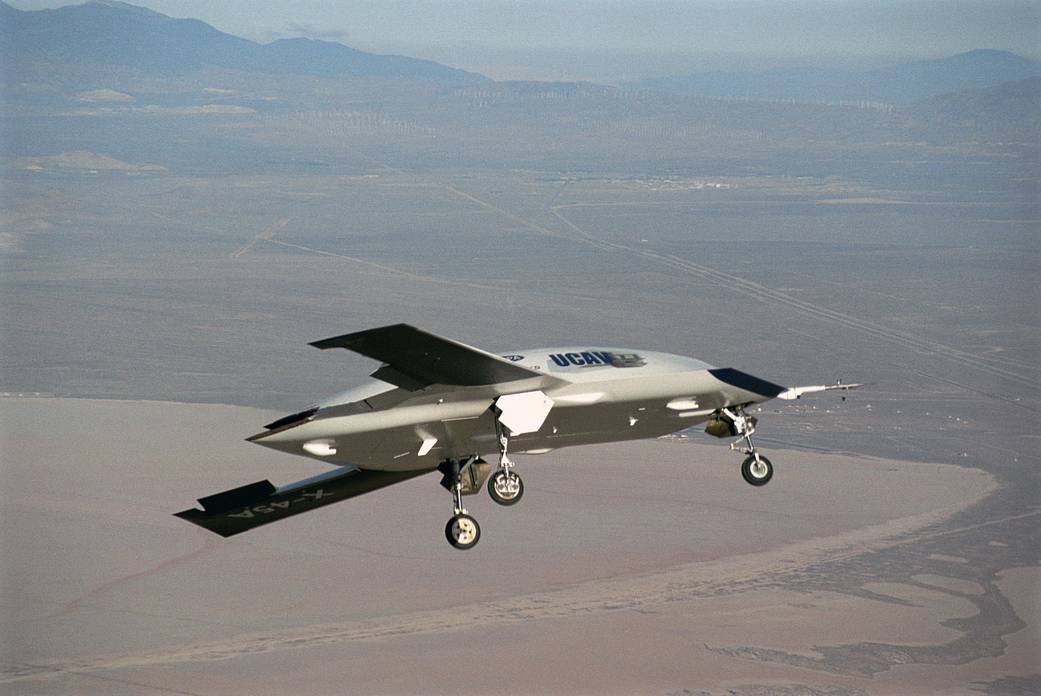The Joint Unmanned Combat Air Systems (J-UCAS) program was a joint DARPA/Air Force/Navy effort to demonstrate the technical feasibility, utility and value for a networked system of high performance, unmanned air vehicles to effectively and affordably prosecute 21st century combat missions, including suppression of enemy air defenses, surveillance, and precision strike within the emerging global command and control architecture. One of the aircraft systems evaluated was the Boeing X-45A, for which NASA Dryden provided technical expertise and support facilities.
The X-45A was the first of two UCAV demonstration versions to be used in advance of fielding operational systems.
The project’s goal was to demonstrate that a highly autonomous aircraft could suppress enemy air defenses or serve in a strike role. Dryden’s participation in the UCAV System Demonstration Program was to support the DARPA/Boeing team in the design, development, integration, and demonstration of the critical technologies, processes, and system attributes, leading to a UCAV Operational System. Initially, Dryden supported the program through the various stages of flight development, including autonomous flight of two aircraft on separate flight paths that later joined for formation flight.
Dryden performed several roles in the research and demonstration aspects of the X-45A UCAV program. Dryden designed the ground control and collision avoidance system that enabled the aircraft to autonomously taxi from the hangar to the active runway and back. Center engineers, relying heavily on simulation models, also designed the ground control laws for all weight-on-wheel-conditions in taxi, takeoff and landing…Learn more
X-45A #1 is currently on display at the Smithsonian National Air and Space Museum in Washington, DC.



























